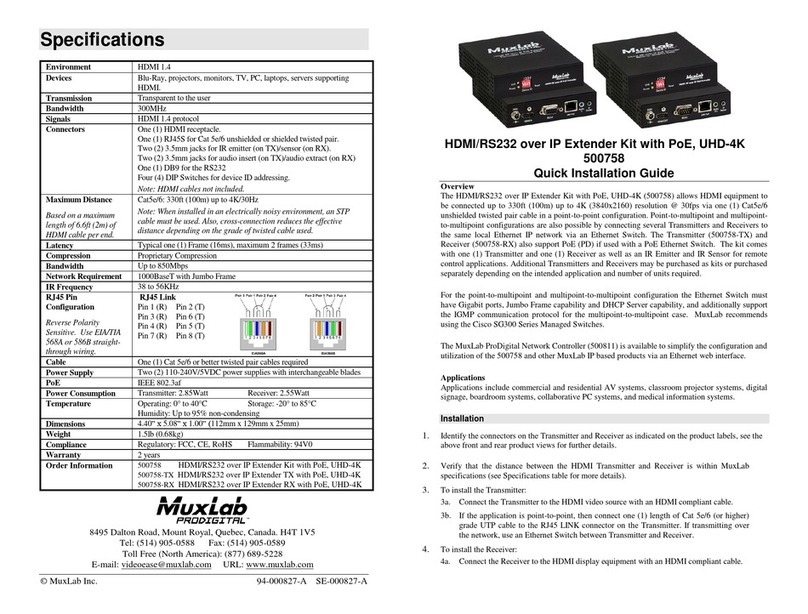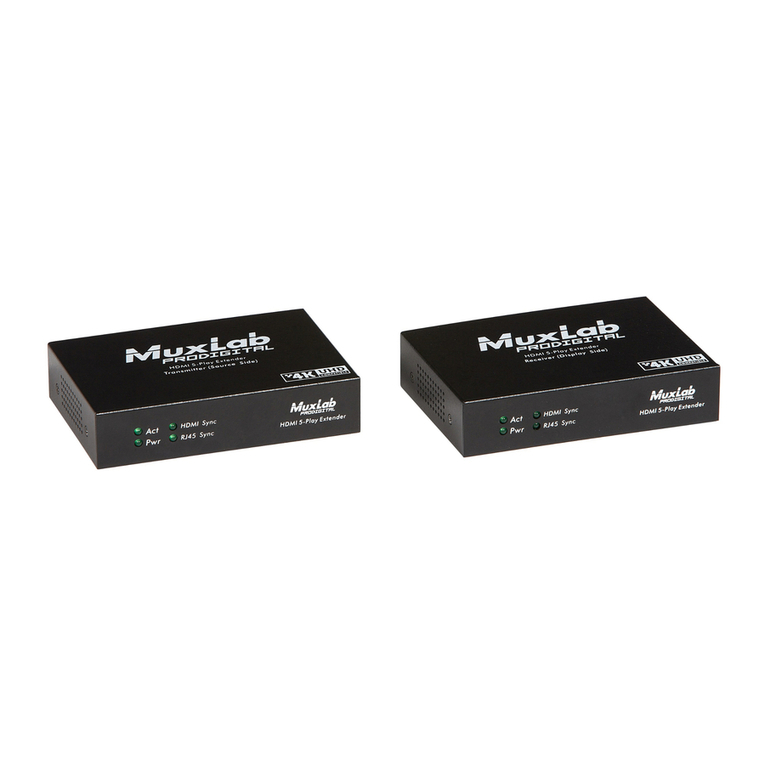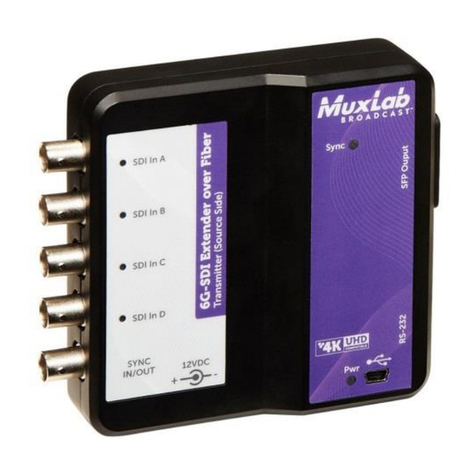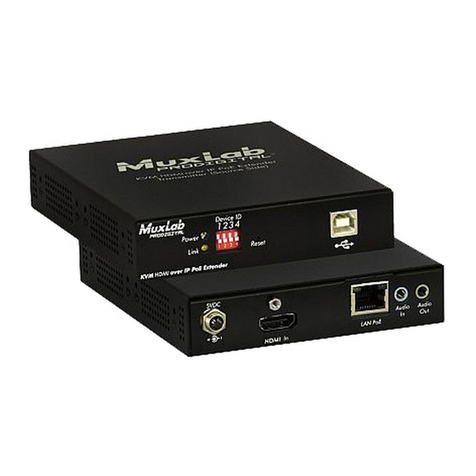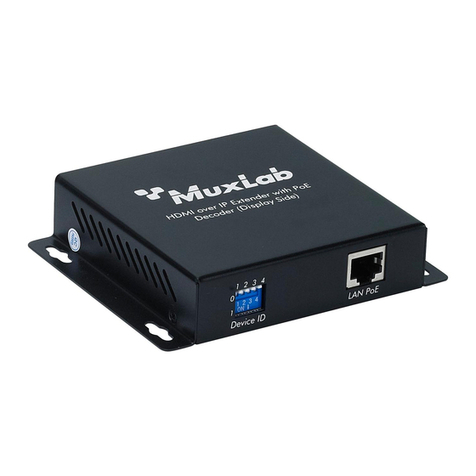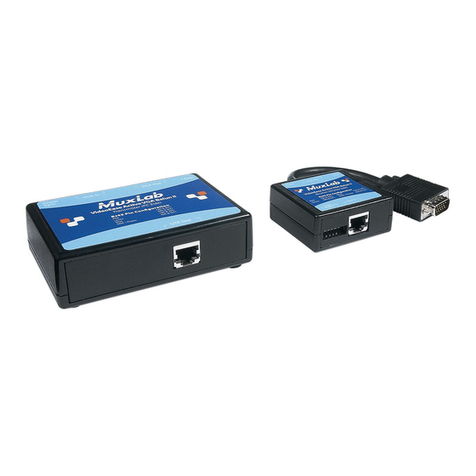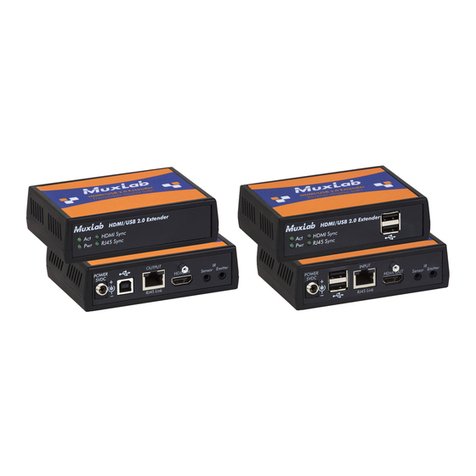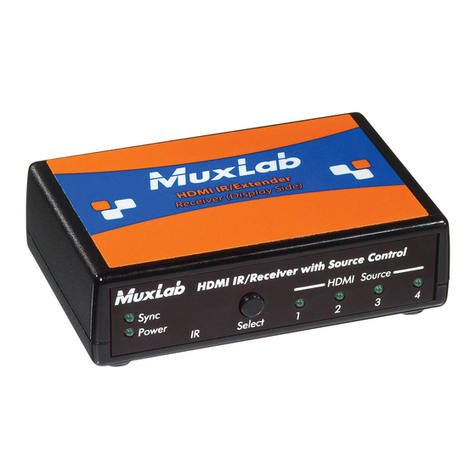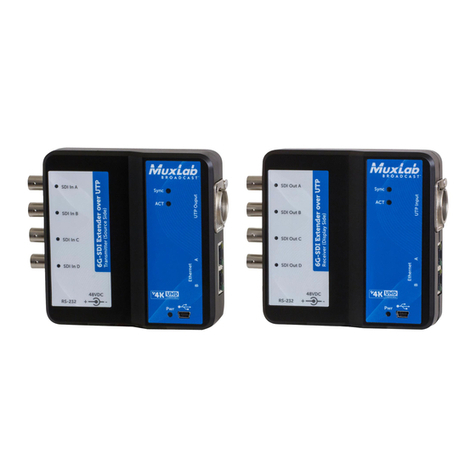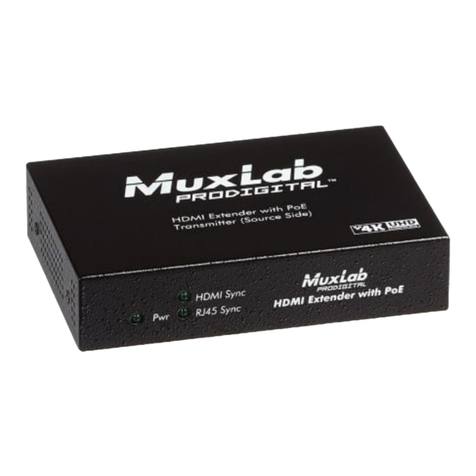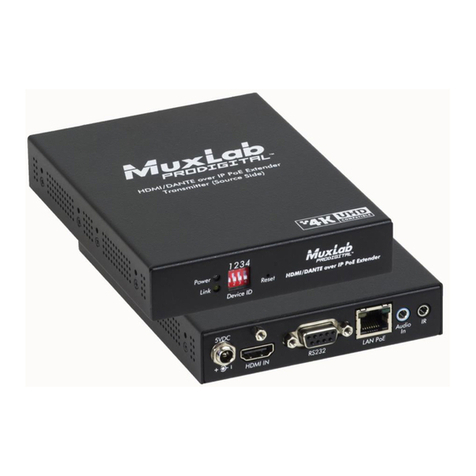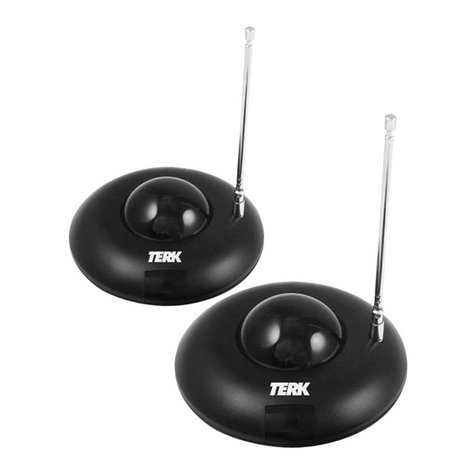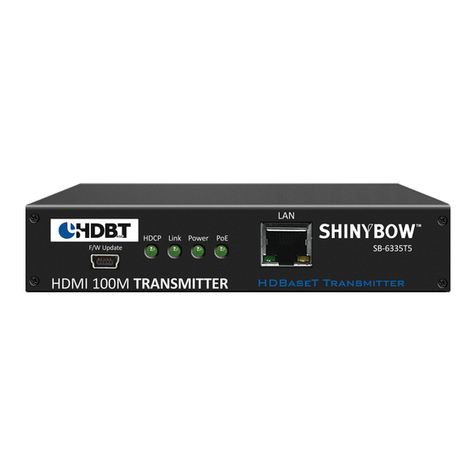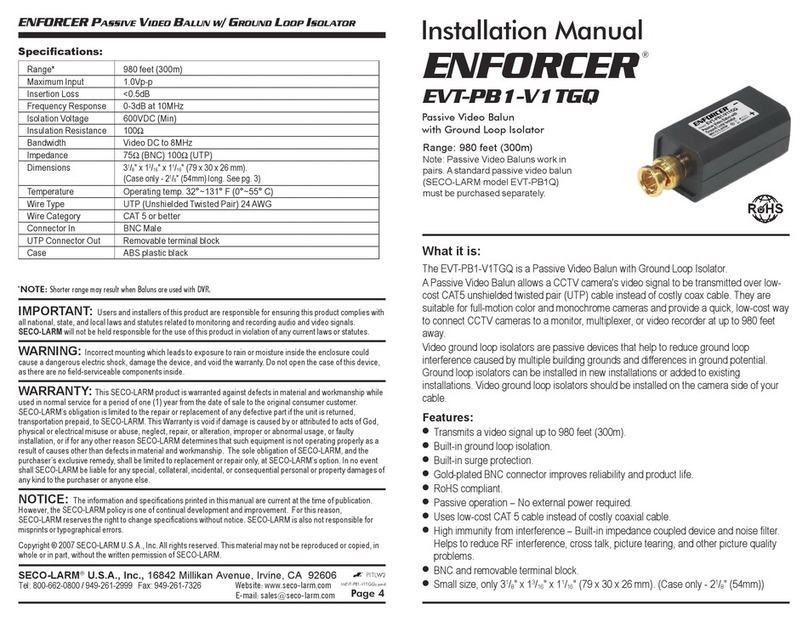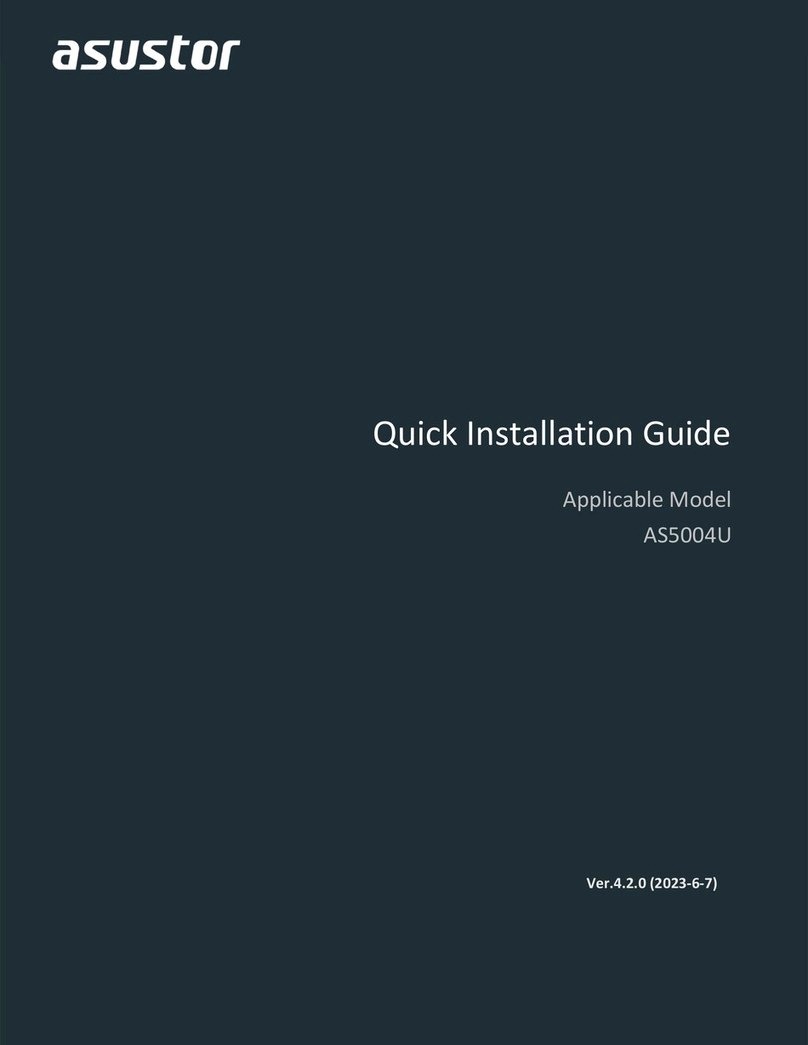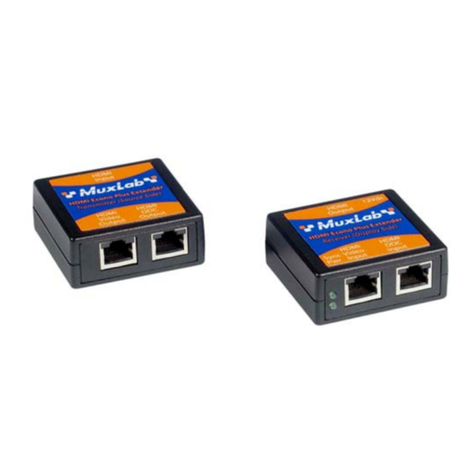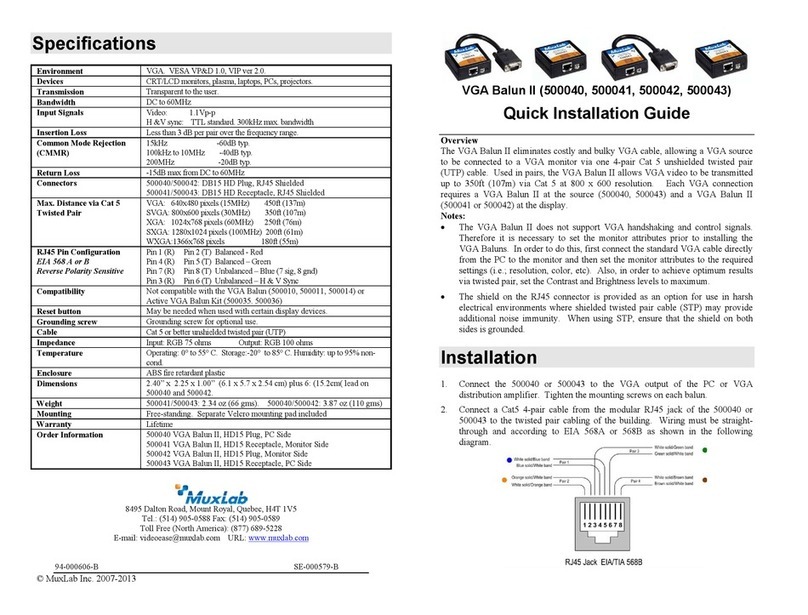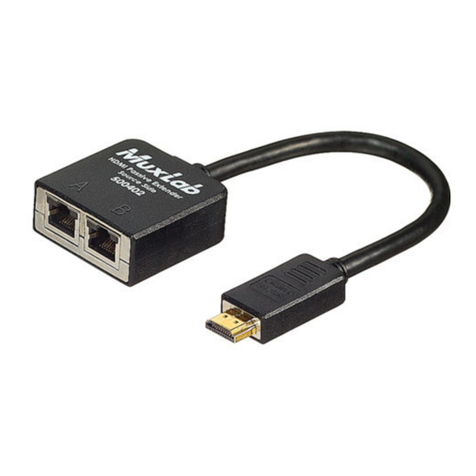© MuxLab Inc. 2016
5. If the configuration is a point-to-multipoint or multipoint-to-multipoint:
5a. You will need to use an Ethernet Switch with Gigabit ports and DHCP Server support.
In addition IGMP Protocol support is required for the multipoint-to-multipoint case.
Verify that the Ethernet Switch is configured correctly and that the DHCP Server
is enabled and that the IGMP Protocol is enabled for multipoint-to-multipoint
applications. See the operating manual for more information about configuring the
Ethernet Switch.
5b. Connect all Transmitters and Receivers to the Ethernet Switch.
5c. Use the DIP Switches to select a unique Device ID for each Transmitter present on the
network and configure each Receiver Device ID to the corresponding selected
Transmitter.
Note: This step is not necessary if the MuxLab ProDigital Network Controller (500811)
is used.
6. Powering the Transmitter or Receiver via an external power supply is only necessary where
PoE (PSE) is unavailable. If PoE is unavailable, connect a 5 VDC power supply (sold
separately) to each Receiver and to an AC power outlet. Next connect each Transmitter in the
same manner. If power is present, the green power LED on each Transmitter and Receiver
will illuminate.
Note: Power ‘ON’ the HDMI / RS232 over IP Extender only after all connections have
been made.
7. Power ‘ON’ the HDMI equipment and verify the image quality.
8. This product supports IR pass-thru control. If infrared remote control is needed to control the
Source equipment from the Display, connect the IR Sensor (sold separately) to the 3.5mm
Stereo Jack of the Receiver and the IR Emitter (sold separately) to the 3.5mm Mono Jack of
the Transmitter.
Note: You can differentiate the IR Sensor and the IR Emitter by looking at the 3.5 mm
plug. The IR Sensor is using a Stereo Plug (3 Contacts) and the IR Emitter a
mono plug (2 Contacts).
9. Position the IR Sensor so that it is directed at the hand-held remote control. For a clear IR
signal reception, aim the hand-held remote control to the top of the IR Sensor enclosure.
10. Position the IR Emitter as close as possible to the source’s IR Sensor (i.e. DVD player). For a
clear IR signal reception, the IR Emitter can be glued on the source’s IR Sensor. The IR
Emitter’s signal is transmitted from the side of the enclosure.
11. This product supports RS232 bidirectional communication. On the Transmitter, the RS232
port is configured as a DCE; and on the Receiver as a DTE. Please connect your RS232 cable
accordingly. The default settings are 9600, N, 8, 1.
12. To send an RS232 packet to a specific device, you need to put the IP address in front of the
packet. This communication is meant to be machine to machine; and hexadecimal codes
must be used. For example, to send the message “Hello” to a device having the
192.168.168.55 IP address, one must send the hexadecimal string: 0xC0 0xA8 0xA8 0x37
0x48 0x65 0x6c 0x6c 0x6f. (or “192 168 168 55 H e l l o” in hexadecimal).
13. The following diagram illustrates a typical point-to-point LAN configuration.
Troubleshooting
The following table describes some of the symptoms, probable causes and possible solutions in regard to
the installation of the HDMI / RS232 over IP Extender Kit with PoE:


